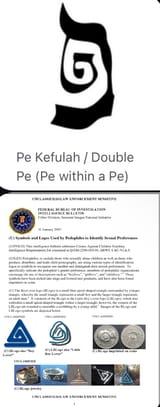Search Results
6/22/2025, 8:42:30 PM
“Pie”
The first known use of the word 'pie' appears in 1303 in the expense accounts of the Bolton Priory in Yorkshire. However, the Oxford English Dictionary is uncertain to its origin and says 'no further related word is known outside English'.
A possible origin is that the word 'pie' is connected with a word used in farming to indicate 'a collection of things made into a heap', for example a heap of potatoes covered with earth.
https://en.m.wikipedia.org/wiki/Pie
——
“PIE” is an abbreviation of Proto-Indo-European language, the reconstructed common ancestor of the Indo-European language family.
No direct record of Proto-Indo-European exists; its proposed features have been derived by linguistic reconstruction from documented Indo-European languages.
Far more work has gone into reconstructing PIE than any other proto-language, and it is the best understood of all proto-languages of its age.
https://en.m.wikipedia.org/wiki/Proto-Indo-European_language
————
Pi (/ˈpaJ/; Ancient Greek /piː/ or /peî/, uppercase Π, lowercase π, cursive ϖ;
In the system of Greek numerals it has a value of 80.
It was derived from the Phoenician letter Pe ()
https://en.m.wikipedia.org/wiki/Pi_(letter)
——
https://en.m.wikipedia.org/wiki/Pe_(Semitic_letter)
Pe is usually assumed to come from a pictogram of a "mouth" (in Hebrew pe; in Arabic, فا fah). The Hebrew spelling is פֵּא. It is also romanized pei or pey, especially when used in Yiddish.
A notable variation on the letter Pe is the Pe Kefulah (Doubled Pe), also known as the Pei Lefufah (Wrapped Pe).
The Pe Kefulah (picrel) is written as a small Pe scribed within a larger Pe. This atypical letter appears in Torah scrolls (most often Yemenite Torahs, but is also present in Sephardic and Ashkenazi Torahs, manuscripts, and some modern printed Hebrew Bibles.
When the Pe is written in the form of a Doubled Pe, this adds a layer of deeper meaning to the Biblical text.
l
DAVE PORTNOY: I LOVE THIS PIE!
The first known use of the word 'pie' appears in 1303 in the expense accounts of the Bolton Priory in Yorkshire. However, the Oxford English Dictionary is uncertain to its origin and says 'no further related word is known outside English'.
A possible origin is that the word 'pie' is connected with a word used in farming to indicate 'a collection of things made into a heap', for example a heap of potatoes covered with earth.
https://en.m.wikipedia.org/wiki/Pie
——
“PIE” is an abbreviation of Proto-Indo-European language, the reconstructed common ancestor of the Indo-European language family.
No direct record of Proto-Indo-European exists; its proposed features have been derived by linguistic reconstruction from documented Indo-European languages.
Far more work has gone into reconstructing PIE than any other proto-language, and it is the best understood of all proto-languages of its age.
https://en.m.wikipedia.org/wiki/Proto-Indo-European_language
————
Pi (/ˈpaJ/; Ancient Greek /piː/ or /peî/, uppercase Π, lowercase π, cursive ϖ;
In the system of Greek numerals it has a value of 80.
It was derived from the Phoenician letter Pe ()
https://en.m.wikipedia.org/wiki/Pi_(letter)
——
https://en.m.wikipedia.org/wiki/Pe_(Semitic_letter)
Pe is usually assumed to come from a pictogram of a "mouth" (in Hebrew pe; in Arabic, فا fah). The Hebrew spelling is פֵּא. It is also romanized pei or pey, especially when used in Yiddish.
A notable variation on the letter Pe is the Pe Kefulah (Doubled Pe), also known as the Pei Lefufah (Wrapped Pe).
The Pe Kefulah (picrel) is written as a small Pe scribed within a larger Pe. This atypical letter appears in Torah scrolls (most often Yemenite Torahs, but is also present in Sephardic and Ashkenazi Torahs, manuscripts, and some modern printed Hebrew Bibles.
When the Pe is written in the form of a Doubled Pe, this adds a layer of deeper meaning to the Biblical text.
l
DAVE PORTNOY: I LOVE THIS PIE!
Page 1
